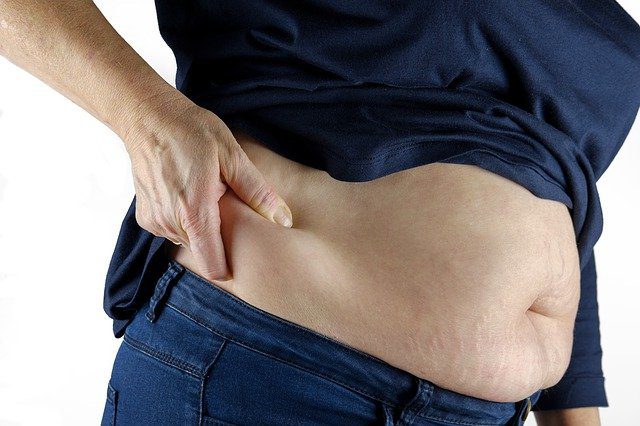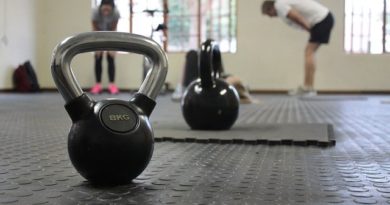8 Things That Can Create a Slow Metabolism
Are you trying everything to lose weight, but the scale just won’t budge? Maybe you see a little progress, but then you hit a frustrating plateau. As a certified sports nutritionist and trainer, I can tell you this is a common struggle, and the culprit could be a slow metabolism.
Your metabolism is the engine that converts food into energy. When that engine runs slowly, your body burns fewer calories, which can sabotage even the best fat loss efforts.
The good news is that you can often reignite that engine with a few strategic changes. It’s about identifying the habits that are holding you back and replacing them with smarter, more effective solutions.
Let’s look at the key factors that can cause a slow metabolism and how you can fix them.
Disclaimer: This article is for informational purposes only and is not meant to treat or diagnose any condition. It is recommended that you speak with your doctor before starting any exercise program, changing your daily nutrition, or adding any supplements to your regimen.
Table of contents
Key Takeaways
- Prioritize Strength Training: Building muscle is one of the most effective ways to increase your resting metabolic rate.
- Eat Enough Protein: Protein has a high thermic effect, meaning your body burns more calories digesting it, and it helps preserve muscle.
- Avoid Crash Dieting: Drastically cutting calories can cause your metabolism to slow down to conserve energy.
- Manage Sleep and Stress: Both sleep deprivation and chronic stress disrupt hormones that regulate metabolism and can lead to fat storage.
- Move Throughout the Day: Increase your Non-Exercise Activity Thermogenesis (NEAT) by breaking up long periods of sitting with short walks.

8 Things Causing Your Slow Metabolism
Below are common habits and lifestyle factors that could be the cause of your slow metabolism. Making changes in these areas can help support your weight loss goals.
1. Not Hitting the Weight Room
You’ve probably heard that “Muscle burns more calories than fat…” and it’s absolutely true. Muscle tissue is metabolically active, meaning it burns calories even when you’re at rest. Fat, on the other hand, requires very little energy to maintain.
A 2020 meta-analysis confirmed that resistance exercise significantly increases your resting metabolic rate (RMR), which is the number of calories your body burns at rest. In fact, one study on older men found that a 16-week strength training program boosted RMR by 7.7%.
Related Article: 6 Things That Are Killing Your Metabolism
Building lean muscle through weight training is one of the most effective ways to combat a slow metabolism. Focus on compound exercises like squats, deadlifts, and bench presses, as they engage multiple muscle groups and provide the biggest metabolic boost.
2. Not Consuming Enough Protein
Your body uses energy to digest food, a process known as the thermic effect of food (TEF). Protein has the highest thermic effect of all macronutrients, meaning your body burns more calories breaking it down.
Digesting protein temporarily boosts your calorie burn by 15-30%, compared to just 5-10% for carbs and 0-3% for fats. This makes protein a powerful tool for revving up a slow metabolism.
For fat loss, I recommend aiming for a daily protein intake between 1.6 and 2.2 grams of protein per kilogram of body weight. This not only increases TEF but also helps preserve the lean muscle mass you’re building in the weight room, which is crucial for maintaining a healthy metabolic rate.
3. Not Consuming Enough Calories
It sounds counterintuitive, but drastically cutting calories is one of the biggest mistakes people make when trying to lose weight. Your body is incredibly smart; when it senses a significant drop in energy intake, it enters a protective state often called “starvation mode.”
This triggers a process known as adaptive thermogenesis, where your metabolism slows down to conserve energy. Your body starts preserving body fat instead of burning it for fuel. This is why crash diets often lead to a frustrating weight loss plateau followed by rapid regain.
Related Article: 7 Things You Should Do to Keep Your Metabolism Revving
To avoid this, focus on a modest and sustainable calorie deficit. A gradual reduction of 300-500 calories from your daily maintenance level is a much more effective strategy for long-term fat loss without killing your metabolism.
4. Not Getting Enough Quality Sleep Each Night
If you’re consistently getting less than seven hours of sleep, you could be sabotaging your metabolism. Sleep deprivation disrupts the hormones that regulate appetite and energy balance.
Specifically, lack of sleep causes levels of ghrelin, the “hunger hormone,” to rise while simultaneously lowering levels of leptin, the hormone that signals fullness. Studies have shown this hormonal shift increases hunger and appetite, particularly for high-calorie foods. This hormonal imbalance, combined with elevated levels of the stress hormone cortisol, creates a perfect storm for a slow metabolism and fat storage.
Aim for a solid seven to nine hours of quality sleep each night. This helps keep your hormones balanced, your energy levels stable, and your metabolism functioning properly.
5. Not Taking Time to Destress Daily
Chronic stress has a direct and damaging effect on your metabolic rate. When you’re constantly stressed, your body produces excess cortisol. This hormone can slow your metabolism, increase cravings for unhealthy foods, and promote the storage of visceral fat, the dangerous type of fat around your organs.
Research from Stanford Medicine in 2018 highlighted that elevated cortisol levels, particularly at night, are strongly linked to the creation of new fat cells. This is why unmanaged stress can lead to stubborn weight gain, especially around the midsection.
It’s crucial to incorporate daily stress-management practices. Even 10-15 minutes can make a difference. Consider techniques like:
- Meditation: Apps like Calm or Headspace offer guided sessions to help quiet your mind.
- Deep Breathing: Simply focusing on slow, deep breaths can lower cortisol levels.
- Reading: Getting lost in a good book can be a great escape from daily pressures.
6. Not Getting Up and Moving Throughout the Day
Even if you have a consistent workout routine, being sedentary for the rest of the day can still lead to a slow metabolism. The energy you burn from everyday movements that aren’t formal exercise is called Non-Exercise Activity Thermogenesis (NEAT).
NEAT can account for a significant portion of your daily calorie burn, ranging from 15% in sedentary individuals to as much as 50% in highly active people. Sitting at a desk for hours on end minimizes NEAT and tells your metabolism to power down.
To combat this, find ways to break up long periods of sitting. A 2023 Columbia University study found that walking for just five minutes every half hour can help offset the negative effects of prolonged sitting. Other research shows that even short walking breaks can boost mood, reduce cravings, and fight fatigue. Simply put, move more and sit less to keep your metabolism active.
7. Not Drinking Enough Water
Proper hydration is essential for every bodily function, including metabolism. Even mild dehydration can cause your metabolic rate to slow down. One small study found that drinking 500 ml of water temporarily increased metabolic rate by 30%.
The National Academies of Sciences, Engineering, and Medicine recommend a general daily fluid intake that can serve as a great starting point.
- For men: About 15.5 cups (3.7 liters) of fluids a day.
- For women: About 11.5 cups (2.7 liters) of fluids a day.
This intake includes water from all beverages and foods. Swapping sugary drinks like sodas and juices for water is an easy way to cut empty calories and support a healthier metabolism and help boost your slow metabolism.
8. Not Putting the Bottle of Alcohol Down
Regular alcohol consumption can put the brakes on a healthy metabolism. When you drink alcohol, your body prioritizes metabolizing it over other nutrients like fat. This can temporarily suppress your body’s ability to burn fat for energy.
Alcohol also provides what we call “empty calories,” meaning they offer little to no nutritional value. These calories add up quickly and can contribute to weight gain. For instance, a single 12-ounce craft IPA can contain over 200 calories, similar to a small bag of chips.
If fat loss is your goal, it’s best to limit or avoid alcohol. This helps keep your metabolism focused on burning stored body fat and prevents the accumulation of extra, unnecessary calories.
FAQs About a Slow Metabolism
Can you fix a slow metabolism?
Yes, you can absolutely take steps to improve your metabolic rate. While genetics play a role, lifestyle changes like incorporating strength training, eating adequate protein, getting enough sleep, managing stress, and staying active throughout the day can significantly boost your metabolism.
At what age does metabolism start to slow down?
While many people believe their metabolism declines in their 30s or 40s, a major 2021 study published in Science found that metabolic rates remain fairly stable between the ages of 20 and 60. A noticeable decline of about 0.7% to 1% per year typically doesn’t begin until after age 60.
What are the signs of a slow metabolism?
Common signs of a slow metabolism can include persistent fatigue, unexplained weight gain or difficulty losing weight, feeling cold often, dry skin, and constipation. If you’re experiencing these symptoms, it’s a good idea to assess your lifestyle habits and consult a healthcare professional to rule out underlying conditions like hypothyroidism.


*Disclosure: This article may contain affiliate links or ads, which means we earn a small commission at no extra cost to you if you make a purchase through these links. These commissions help support the operation and maintenance of our website, allowing us to continue producing free valuable content. Your support is genuinely appreciated, whether you choose to use our links or not. Thank you for being a part of our community and enjoying our content.
PLEASE CONSIDER SHARING THIS ON YOUR SOCIAL MEDIA TO HELP OTHERS LEARN MORE ABOUT THIS TOPIC.





